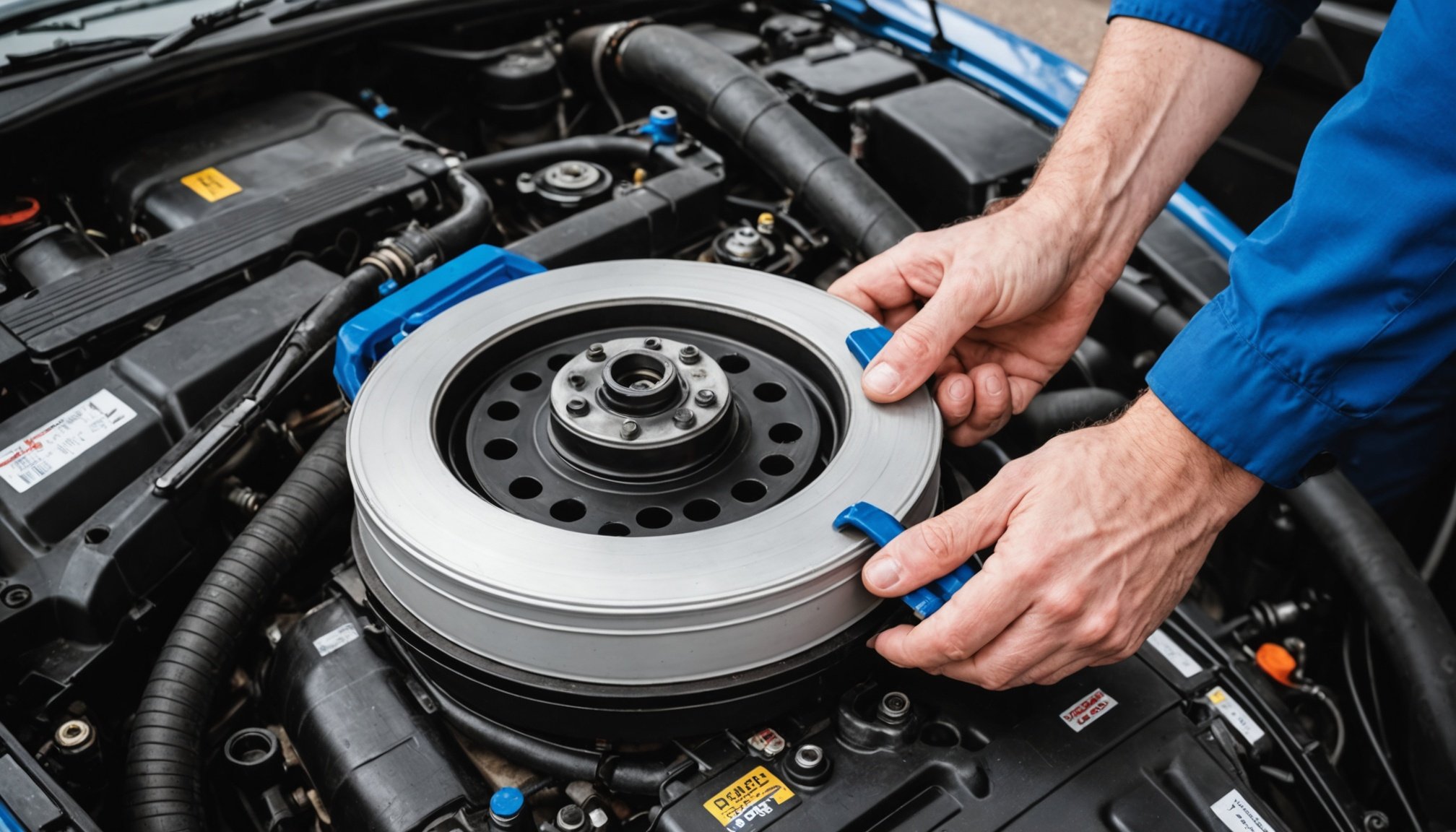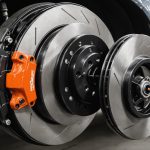Ultimate Guide to Brake Fluid Replacement: A Comprehensive Step-by-Step Approach for UK Car Enthusiasts
Understanding the Importance of Brake Fluid
When it comes to the safety and performance of your vehicle, few components are as crucial as the brake fluid. Brake fluid is the lifeblood of your car’s braking system, ensuring that the pressure from the brake pedal is transmitted efficiently to the brake pads, enabling your car to stop smoothly and safely.
“Brake fluids are safety-critical components The specifications of the respective manufacturer must be strictly observed and complied with,” emphasizes LIQUI MOLY, a leading manufacturer of automotive lubricants and fluids[1].
Additional reading : The complete handbook: get your uk car ready for an unforgettable track day adventure
Brake fluid must withstand extreme conditions, including high temperatures and pressures, and it must also protect the brake system from corrosion. However, due to its hygroscopic nature, brake fluid absorbs water over time, which can lead to a reduction in braking performance and even safety issues.
Types of Brake Fluid: Choosing the Right One
Not all brake fluids are created equal, and selecting the right type for your vehicle is essential. Here are some of the most common types of brake fluid:
This might interest you : Prolonging performance: key strategies to maximize the lifespan of high-performance brakes in uk sports cars
Brake Fluid DOT 3
- Suitable for older vehicles without modern brake control systems like ABS or ESC.
- Has a lower boiling point compared to higher quality types, making it more susceptible to steam bubble formation under high loads[1].
Brake Fluid DOT 4
- Suitable for use in all disk and drum brake systems and in some clutch systems.
- Has a higher dry and wet boiling point compared to DOT 3, making it more reliable for modern vehicles with ABS systems[1].
Brake Fluid DOT 5.1
- Offers fast response times due to its low viscosity, ideal for modern brake control systems.
- Characterized by high thermal stability and excellent corrosion protection, promoting the service life of the brake system[1].
Brake Fluid DOT 5.1 EV
- Specially developed for electric vehicles, offering high thermal stability and low electrical conductivity.
- Ensures safe braking even after absorbing moisture over a longer period of use[1].
How to Check Your Brake Fluid
Regular checks of your brake fluid are essential to ensure your car’s braking system is running smoothly. Here’s how you can do it:
Locate the Brake Fluid Reservoir
- The reservoir is typically located near the back of the engine bay[2].
Check the Fluid Level
- Ensure the fluid level is between the ‘min’ and ‘max’ lines on the reservoir. If it’s low, top it up with the correct type of brake fluid specified in your vehicle’s manual[2].
Inspect the Fluid Condition
- Look for signs of contamination or degradation, such as dark or dirty fluid. If the fluid appears compromised, it may be time for a change[2].
When to Change Your Brake Fluid
Changing your brake fluid is not just a matter of routine maintenance but also a safety imperative. Here are some guidelines on when to change your brake fluid:
Recommended Interval
- As a rule of thumb, brake fluid should be changed every two years. However, if you notice any issues with braking performance, it should be checked and changed immediately[1].
Signs of Issues
- A spongy or unresponsive brake pedal.
- Warning lights on the dashboard.
- Dark or dirty brake fluid.
- Reduced braking performance[2].
Step-by-Step Guide to Changing Brake Fluid
Changing brake fluid is a task that requires some care and attention to detail. Here’s a step-by-step guide to help you through the process:
Gather the Necessary Tools and Materials
- The correct type of brake fluid for your vehicle.
- A clean container for the old fluid.
- New brake fluid reservoir cap (if necessary).
- Brake bleeding kit.
- Safety gloves and goggles.
Drain the Old Fluid
- Locate the brake fluid reservoir and remove the cap.
- Use a syringe or a turkey baster to extract the old fluid from the reservoir.
- Transfer the old fluid to a clean container for proper disposal.
Bleed the Brake System
- Use a brake bleeding kit to remove any air bubbles from the brake lines.
- Start with the wheel furthest from the master cylinder and work your way back.
- Use a helper to pump the brake pedal while you open and close the bleed valves.
Fill with New Fluid
- Once the system is bled, fill the reservoir with the new brake fluid.
- Make sure to use the correct type and amount specified in your vehicle’s manual.
Test the Brakes
- Take your car for a test drive to ensure the brakes are functioning properly.
- Check for any signs of air bubbles or reduced braking performance.
Tips for Maintaining Your Brake Fluid
Maintaining your brake fluid is crucial for the overall safety and performance of your vehicle. Here are some tips to keep in mind:
Regular Checks
- Inspect your brake fluid every 6 months to ensure it’s at the proper level and hasn’t absorbed excessive moisture[2].
Use the Right Fluid
- Always refer to your owner’s manual for the correct fluid type and specifications. Using the wrong fluid can lead to compatibility issues and reduced braking performance[2].
Look for Leaks
- Regularly inspect your parking spot for any signs of fluid leaks. Brake fluid leaks can be dangerous and should be addressed immediately[2].
Professional Assistance
- Due to the critical nature of brake fluid and the need for proper bleeding, it’s often best to have this task handled by a professional mechanic[2].
Common Mistakes to Avoid
When it comes to brake fluid maintenance and replacement, there are several common mistakes to avoid:
Using the Wrong Fluid
- Using a brake fluid that does not meet the specifications of your vehicle can lead to compatibility issues and reduced braking performance.
Not Bleeding the System Properly
- Failing to bleed the brake system properly can result in air bubbles, which can compromise the braking efficiency and safety of your vehicle.
Ignoring Signs of Issues
- Neglecting signs of brake fluid degradation or contamination can lead to serious safety issues and costly repairs.
Maintaining your car’s brake fluid is an essential part of car maintenance that cannot be overlooked. By understanding the different types of brake fluid, knowing when to change it, and following a step-by-step guide for replacement, you can ensure your vehicle’s braking system is always running smoothly and safely.
Here is a summary of the key points in a detailed bullet point list:
-
Types of Brake Fluid:
-
DOT 3: Suitable for older vehicles without modern brake control systems.
-
DOT 4: Suitable for use in all disk and drum brake systems and some clutch systems.
-
DOT 5.1: Ideal for modern brake control systems with high thermal stability.
-
DOT 5.1 EV: Specially developed for electric vehicles with low electrical conductivity.
-
How to Check Brake Fluid:
-
Locate the brake fluid reservoir.
-
Check the fluid level between ‘min’ and ‘max’ lines.
-
Inspect the fluid condition for signs of contamination.
-
When to Change Brake Fluid:
-
Every two years as a rule of thumb.
-
Immediately if issues with braking performance are noticed.
-
Step-by-Step Guide to Changing Brake Fluid:
-
Gather necessary tools and materials.
-
Drain the old fluid.
-
Bleed the brake system.
-
Fill with new fluid.
-
Test the brakes.
-
Tips for Maintaining Brake Fluid:
-
Regular checks every 6 months.
-
Use the correct fluid type.
-
Look for leaks.
-
Seek professional assistance if unsure.
By following these guidelines and tips, you can ensure your car’s braking system remains in top condition, providing you with the safety and performance you need on the road.
Comparative Table of Brake Fluid Types
| Brake Fluid Type | Boiling Point | Suitability | Special Features |
|---|---|---|---|
| DOT 3 | Lower | Older vehicles without ABS/ESC | Minimum requirement for older vehicles |
| DOT 4 | Higher | All disk and drum brake systems, some clutch systems | Suitable for ABS systems, higher boiling point than DOT 3 |
| DOT 5.1 | Very High | Modern brake control systems | Fast response times, high thermal stability, excellent corrosion protection |
| DOT 5.1 EV | Very High | Electric vehicles | Low electrical conductivity, high thermal stability, designed for electric drive technology |
This table provides a quick reference to help you choose the right brake fluid for your vehicle based on its specifications and requirements.
In conclusion, maintaining and replacing your car’s brake fluid is a crucial aspect of car maintenance that ensures your vehicle’s safety and performance. By understanding the different types of brake fluid, knowing when to change it, and following the step-by-step guide, you can keep your car running smoothly and safely. Remember, regular checks and the right maintenance tips are key to a well-functioning braking system.











